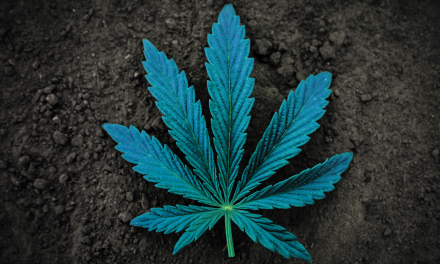A few grains of salt. That’s the amount of fentanyl it takes to cause a fatal overdose. In recent years, fentanyl has infiltrated drug supplies, posing a lethal danger to longtime and casual users alike. Many users are unaware that they are receiving drugs cut with fentanyl or, in some cases, only fentanyl, which increases the risk of an overdose.
Fentanyl is a synthetic opioid 80-100 times stronger than morphine, initially developed for cancer patients to manage pain. Cheap, potent, and easily accessible, fentanyl is used to cut drugs like cocaine, heroin, and pressed pills to maximize profitability and boost potency. In addition, some users abuse fentanyl on its own because of its intense effects.
The Rise of Fentanyl
The latest data from the CDC reported record high drug-related deaths. In a 12-month period concluding at the end of April 2021, 100,306 deaths were reported, a 28.5% increase from the same time period a year earlier with 64% of those deaths caused by fentanyl. Recent data also shows that overall overdose deaths in Missouri increased by nearly 20% during the same time period.
Experts say fentanyl is to blame for the vast increase in fatal drug overdoses, and the COVID-19 pandemic has further exacerbated the opioid crisis. “What COVID has done is it has increased our social isolation,” said Sarah Evans of the International Harm Reduction Development for Open Society Foundations in an interview with KCUR 89.3. “We know that people who use drugs are more likely to use them in isolation and less likely to be able to access key resources that would help them, like overdose reversal medication, and that has exacerbated the situation.”
CDC researchers found that 13% of people surveyed began using drugs during the pandemic or increased their use. With international travel limited due to the pandemic, synthetic opioids, such as fentanyl, are easier to manufacture and easier to smuggle across borders. According to Drug Enforcement Administration Administrator Anne Milgram, the U.S. government seized enough fentanyl in 2021 to give every American a lethal dose.
Because of its powerful opioid properties, fentanyl is considered highly addictive. Similar to other opioid drugs, such as heroin and morphine, fentanyl works by binding to the body’s opioid receptors, which are in the parts of the brain that control pain and emotions. Opioid drugs bind to these receptors, increasing dopamine levels in the brain’s reward areas, producing a state of euphoria and relaxation.
These receptors are also found in the areas of the brain that control breathing. High doses of opioids can cause breathing to stop completely. The high potency of fentanyl significantly increases the risk of overdose. That risk escalates when a person who uses drugs is unaware that a powder or pill contains fentanyl. When other drugs are mixed with fentanyl, it is impossible to know the ratio of the fentanyl dosage. This often results in users getting a “hot shot” of mostly fentanyl, leading to fatal consequences.
“It’s rare to find people who only overdose on cocaine or who only overdose on methamphetamines,” said Dr. Nora Volkow, head of the National Institute of Drug Abuse, in a webinar hosted by the American Society of Addiction Medicine. “Fentanyl is being used to lace the illicit drug market because it’s very profitable.”
Using Harm Reduction as a Means to Reduce Overdose
A once-controversial approach, harm reduction, is becoming more accepted in today’s society. This method’s premise is that if people are going to use drugs, they should have tools to use safely and prevent death. Antagonists of harm reduction strategies often equate it with enabling drug abuse. However, studies show it reduces death, encourages those in active addiction to seek help without fear of repercussion, and equips bystanders with the tools to intervene.
The National Harm Reduction Coalition has put together a list of tips about how to safely use fentanyl or other drugs suspected of containing the opioid:
- Take it slow and use less.
- Try snorting or smoking instead of injecting to reduce risk.
- Practice extra caution.
- Carry naloxone.
- Test your supply.
- Listen to your body: Hydrate, eat, and rest.
Naloxone, also known as Narcan, is a medicine that rapidly reverses an opioid overdose. The National Institute on Drug Abuse recommends that people with loved ones who struggle with opioid addiction keep naloxone nearby, ask their loved one to carry it, and let others know where it is.
Naloxone reverses an opioid overdose in the body for 30 to 90 minutes. However, potent opioids like fentanyl remain in the body longer than that, making it possible that a person can experience the effects of an overdose after a dose of naloxone wears off. Fentanyl overdoses often require more than one dose of naloxone, so it is vital to call 911 after administering a dose to receive appropriate medical care.
Knowing the signs of opioid overdose allows bystanders to intervene and administer the life-saving medication quickly. Here are signs to look out for:
- Unconsciousness
- Very small pupils
- Slow or shallow breathing
- Vomiting
- Inability to speak
- Faint heartbeat
- Limp arms and legs
- Pale skin
- Purple lips and fingernails
The MO Hope Project has developed a resource list for Missourians to access free or low-cost naloxone.
Fentanyl test strips can identify the presence of the opioid in drugs such as injectable drugs, powders, and pills. Being aware when fentanyl is present allows people to implement harm reduction strategies to reduce the risk of an overdose. Fentanyl tests are inexpensive and easy to use. The user dips the strip into water containing a small amount of drug residue and waits a few minutes for results. The appearance of a single line signifies the presence of fentanyl.
A 2018 study found that drug users provided with fentanyl test strips and who reported receiving positive results were more likely to make changes in overdose risk behavior such as using more slowly, using less, throwing the batch away, using with another person around, or making sure to have naloxone on hand. Fentanyl test strips can be purchased via Dose Test for $1 per unit.
Overdose deaths are preventable. More than 190 people die from an overdose every day — totaling more than 70,000 avoidable deaths every year.
“As we continue to make strides to defeat the COVID-19 pandemic, we cannot overlook this epidemic of loss, which has touched families and communities across the country,” said President Joe Biden in a statement released by the White House. “To all those families who have mourned a loved one and to all those people who are facing addiction or are in recovery: You are in our hearts, and you are not alone.”
Locate substance use treatment and services in Missouri.
Read more on this topic from accessHealth News:
Fentanyl Test Strips are an Important Harm Reduction Tool
New Narcan Vending Machine Combats Opioid Crisis in Butler County








